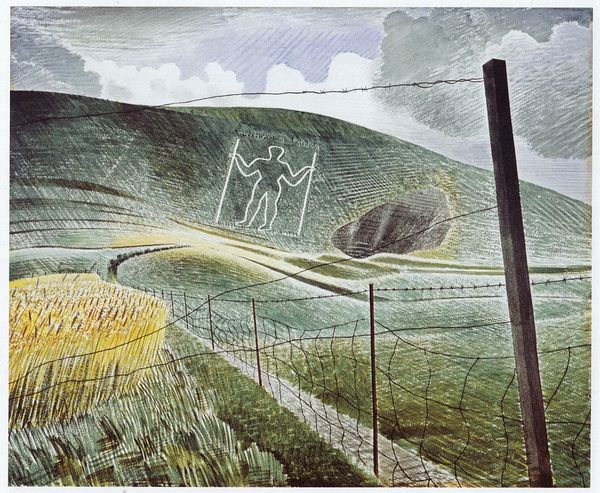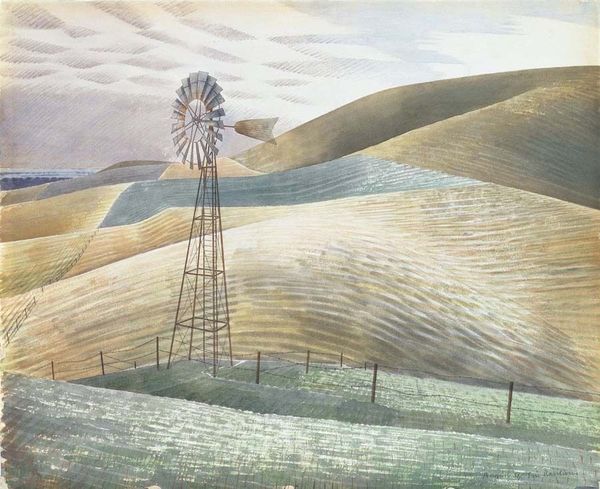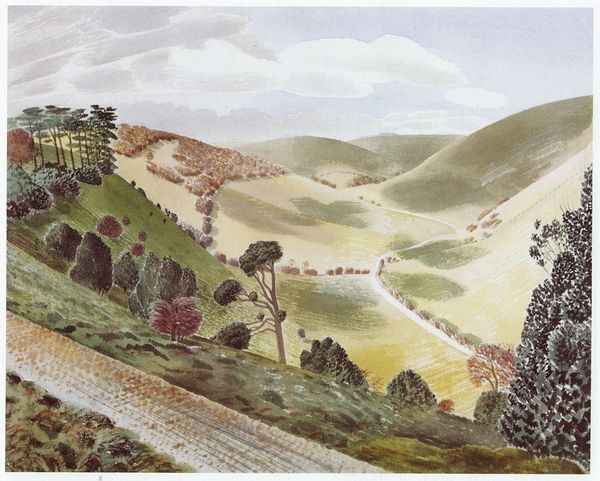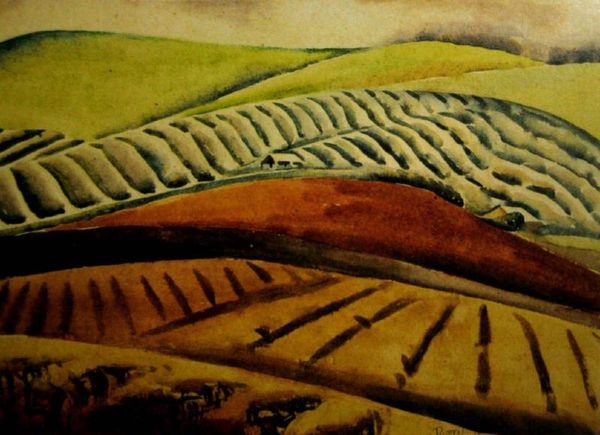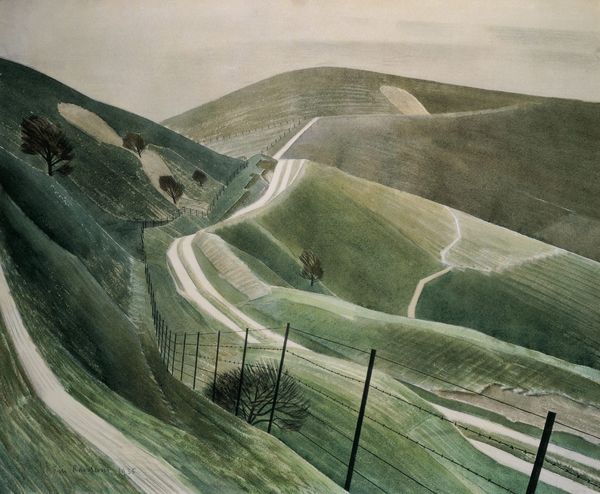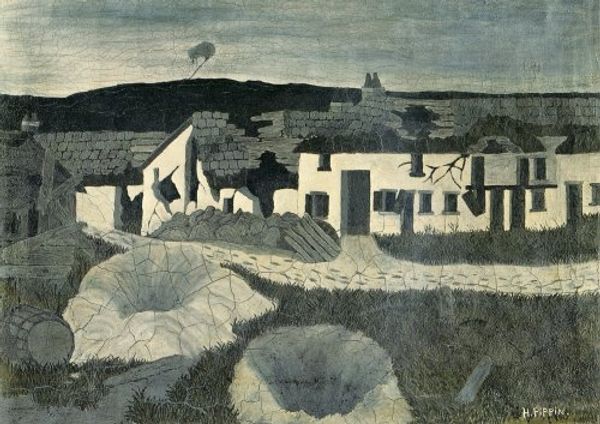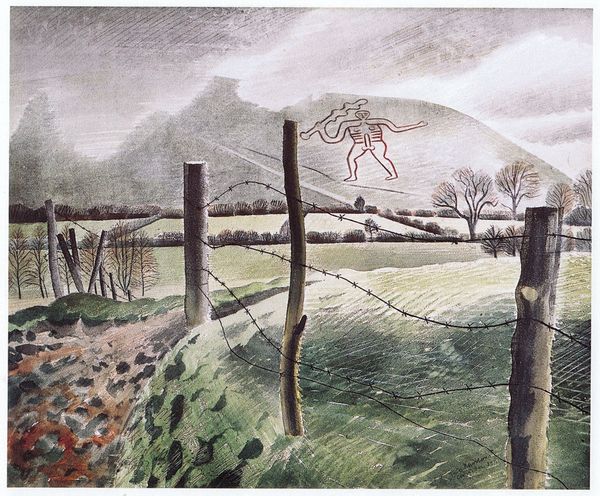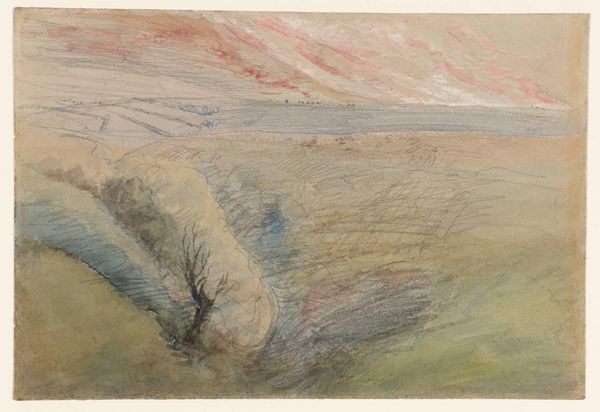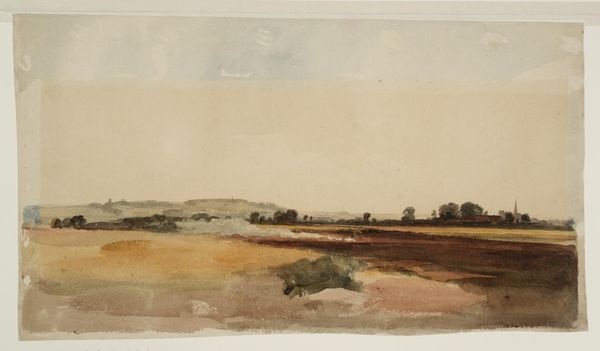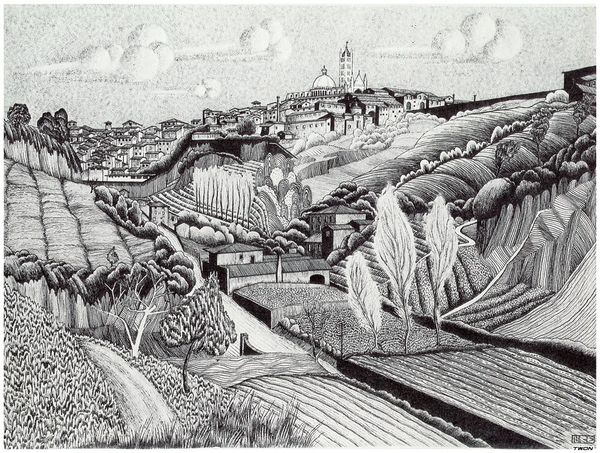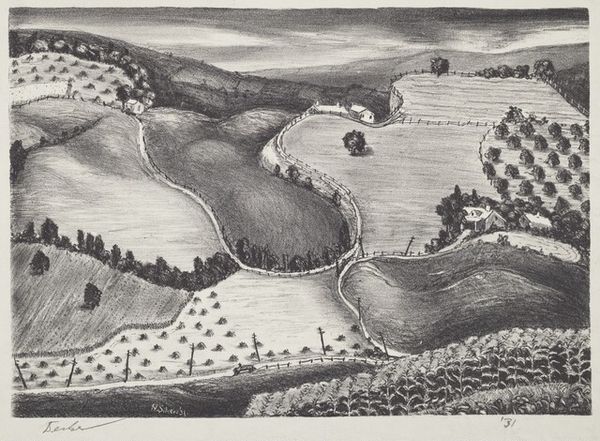
watercolor
#
landscape
#
charcoal drawing
#
oil painting
#
watercolor
#
pastel chalk drawing
#
mixed medium
#
watercolor
#
realism
Copyright: Public domain
Curator: Eric Ravilious created this watercolor painting, “Downs in Winter,” in 1934. I find it a strikingly quiet and contemplative landscape. Editor: There’s a muted bleakness, almost a kind of resigned melancholy in the rendering. I am curious how it reflected social undercurrents. Curator: Well, consider the historical moment: rural England in the interwar period, grappling with agricultural depression. Ravilious often depicted everyday scenes with a subtle tension. Think about what’s *not* shown here – the labor itself, the people tied to the land. The roller itself seems poised and inert, waiting to fulfill its role in the exploitation. Editor: It is a stillness charged with potential energy. This mechanical tool dominating the foreground feels representative of encroaching mechanization reshaping rural existence, while, from the artist’s view, the machine would be an aesthetic rather than social topic of focus. The undulating hills become, at once, picturesque and threatened. How does this perspective challenge conventional landscape depictions? Curator: Ravilious wasn't glorifying a pastoral ideal; he was observing a changing reality. His landscapes often featured these juxtapositions, contrasting natural forms with modern elements and often subtly hinting at class disparities tied to land ownership. He makes the viewer question romantic notions about nature and the lives of agricultural workers that would permeate public views. Editor: The muted color palette further enforces this sense of realism, steering away from idealization. Do the colors and the specific composition play into prevailing artistic narratives, and where can the deviation be found? Curator: Absolutely. Ravilious subverts expectations of what a pleasing rural scene *should* be. Instead, he uses somber tones to evoke a mood of starkness and quiet resistance and reflection, a testament to a community's ability to endure amidst upheaval. And it pushes us to re-evaluate the role of artists during that tumultuous era and asks whose stories were deemed worthy to tell. Editor: Precisely. In essence, a poignant reflection on land, labor, and the evolving social landscape in interwar Britain, prompting essential questions about representation, resilience, and responsibility in the face of socio-economic transformations. Curator: A subtle artwork indeed.
Comments
No comments
Be the first to comment and join the conversation on the ultimate creative platform.
